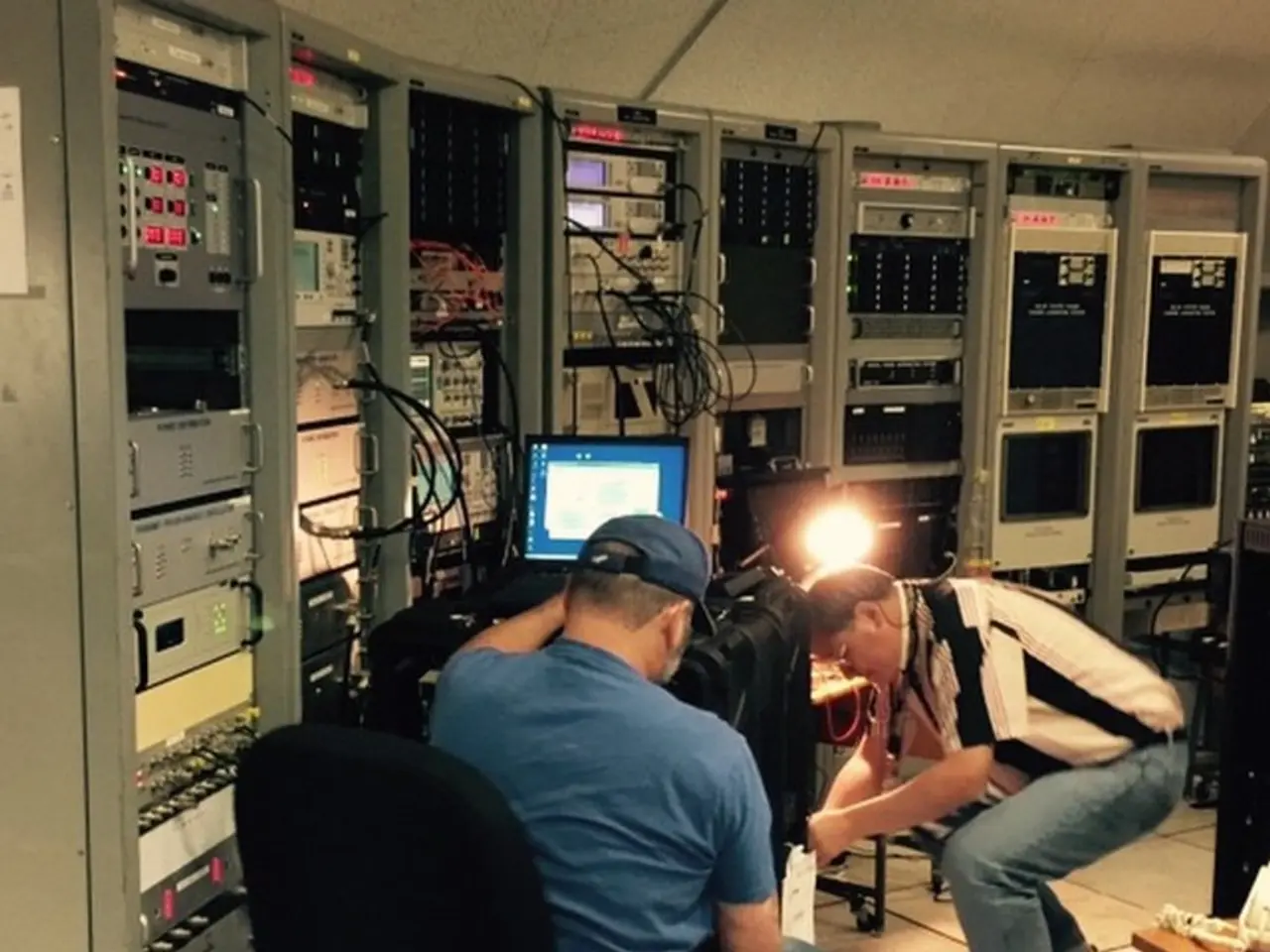Understanding Emergency Power Supplies: Their Importance and Potential Usage Scenarios
In the event of a power outage, having an emergency power supply can be a lifesaver. Two popular options are portable power stations and gas generators, each with their unique advantages and disadvantages.
Portable power stations, such as the 757 PowerHouse, are rechargeable battery packs that store energy from AC chargers or renewable sources like solar panels or wind turbines. They are compact, lightweight, and easy to transport, making them an ideal choice for those seeking a convenient and sustainable power solution.
The 757 PowerHouse, for instance, boasts a power output of 1500 watts, capable of powering up to 13 devices simultaneously. It also features a variety of ports, including USB-C, USB Type-A, a car charging port, and six AC power outlets. What's more, it's virtually maintenance-free, as it has no moving parts.
Solar energy is a common option for emergency power generators, being a renewable, non-polluting, and free source of energy. The Solar Generator 767, for example, can be adjusted to an angle of 40, 50, or even 60 degrees to capture optimal sunlight. With a special adapter, it can hook up to five solar panels at once. Moreover, it's designed to charge the 757 PowerHouse on the go, using monocrystalline silicon solar cells for maximum energy conversion.
On the other hand, gas generators offer higher power capacity and longer runtime (as long as fuel is available). However, they come with downsides such as noise, emissions, regular maintenance, fire hazards, and fuel expenses. They are also bulkier and heavier than power stations.
When choosing between the two, it's essential to consider your power needs, willingness to handle fuel and maintenance, environmental concerns, and budget considerations. For light to moderate emergency power with an emphasis on convenience and sustainability, portable power stations are preferable. For heavy-duty power demands or longer continuous runtime, gas generators might be more suitable.
It's also worth noting that not every home can take advantage of solar power. In such cases, gas generators or emergency battery backup power are necessary. When purchasing an emergency power supply, it's recommended to look for a power rating of at least 1500 watts.
During a power cut, portable power stations offer clean and quiet energy, making them a better choice for longer-term use and powering sensitive electronics. Unlike gas generators, they can be used indoors without the risk of carbon monoxide poisoning. They are also super silent, unlike gas generators, which can be noisy and emit fumes, making them unsuitable for indoor use.
The 767 PowerHouse is part of the our website's portable power devices series, offering a reliable power source during power outages. Even during an emergency power outage on a rainy or cloudy day, the efficiency of solar power can be decreased, but portable power stations remain a reliable alternative.
In conclusion, whether you opt for a portable power station like the 757 PowerHouse or a gas generator, having an emergency power supply can provide peace of mind during power outages. By understanding the pros and cons of each option, you can make an informed decision based on your specific needs and circumstances.
In the realm of home-and-garden technology, the lifestyle choice of owning a portable power station like the 757 PowerHouse offers a clean and quiet energy source during power outages, making it suitable for indoor use and sensitive electronics. On the other hand, home-and-garden tech integrating gas generators provides higher power capacity but may require more maintenance, emit fumes, and pose potential safety risks.




